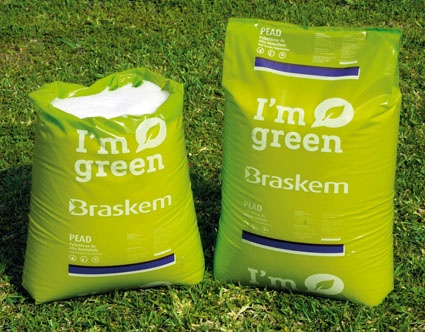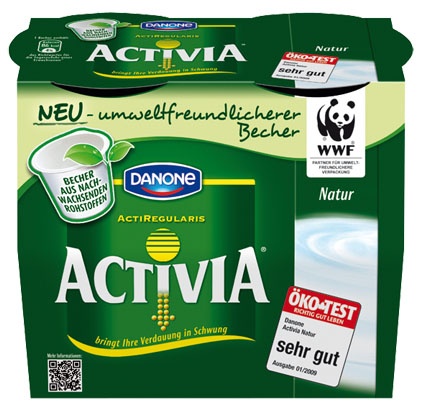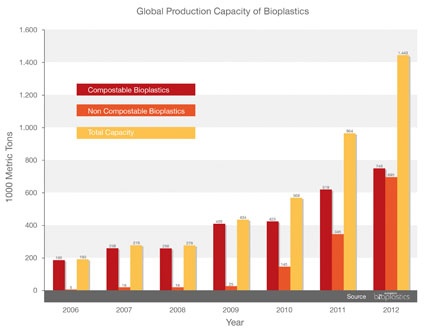Biobased Packaging — A Long-Term Trend




Forging New Ground - European supermarkets - Sainsbury's in the UK or Albert Heijn in the Netherlands - may be cited as pioneers, being the first to recognize the opportunities for bioplastics packaging. At the beginning of their market introduction, the focus was on materials and products made from biodegradable polymers.
The range of bioplastic materials used in the European packaging market today is much broader now. The polymers used for diverse applications can be biobased, biodegradable or both. The type of bioplastic material utilized depends on the application.
About 250 million tons of plastics are produced annually. Bioplastics today still account for a share well below 1 %. However, the current market is characterized by high growth and strong diversification. There are numerous industry internal and external factors that further encourage the growth of the bioplastics industry.
Industry internal factors are among others:
- Advanced technical properties and functionality
- Potential for cost reduction through economy of scale
- Cost-efficient new recycling option in case of biodegradable products
Among the industry external market factors, European Bioplastics counts:
- High consumer acceptance
- Societal concerns about climate change
- Price increase of fossil resources
- Dependence on fossil resources
With a growing number of materials, applications and products, the number of manufacturers, converters and end-users increases steadily. Significant financial investments have been made in production and marketing to guide and accompany this development.
Bioplastics - a Family of Materials
There are a multitude of applications - ranging from beverage bottles in the packaging segment to keyboards in the consumer electronics segment - depending on the application different types of bioplastics are processed in these products. Bioplastics are not a single kind of polymer but rather a family of materials that can vary considerably from one another. There are three groups in the bioplastics family, each with its own individual characteristics.
These include fully or partly biobased commodity plastics such as PE, PET or PVC, and soon PP (drop-in solutions); new polymers that are biobased and biodegradable, including PLA and PHA; and new polymers that are based on fossil resources and are biodegradable, such as PBAT or PBS. Biobased or partly biobased commodity polymers (drop-in solutions) today feature identical properties as their conventional versions. Biodegradability of polymers is directly linked to the chemical structure, not to the origin of the raw materials. Under specific conditions (e.g. controlled temperature, humidity, aeration) biodegradable plastic products can be composted in industrial composting plants. In order to be processed this way, these polymers need to be certified and labeled as compostable. Bioplastic packaging demand is forecast to grow at a high rate over the next five to ten years. Especially biobased or partly biobased commodity plastics will contribute decisively to the growing segment of bioplastic materials within packaging.
Bioplastic Materials and the Environment
The reasons for the growing demand of biobased plastics is obvious: The use of renewable resources by the industry can reduce the amount of greenhouse gas CO2 emissions. In biobased commodity plastic products, biological carbon can be sequestered over the span of a product's useful life. This not only results in carbon being extracted and saved from the atmosphere, but also in high-value, exportable products being manufactured. Moreover, taking into account the EU's limited crude oil and natural gas resources, the increased industrial use of biomass will be indispensable in the mid-term.
However, the use of biodegradable polymers in short-life consumer goods and disposables can also be advantageous: Biodegradable materials offer additional disposal options such as composting for e.g. food packaging or catering products.
Packaging Market - A Pioneer Sector for Bioplastics
The bioplastics industry is continuously growing - about 20 % annually. Its dynamic development is especially obvious in the packaging sector, where bioplastics trends often are applied for the first time. Bioplastics were introduced to the packaging market about two decades ago. The variety of bioplastic materials used has since increased decisively. Simultaneously, the properties of these bioplastic materials have been optimized, for example printability, transparency, barrier, and gloss.
Bioplastics today are a sound alternative to conventional plastic packaging solutions. From yogurt cups and bottles to cosmetic packaging and shopping bags, the market penetration of bioplastic products in the packaging market is well ahead of other sectors. Recently, big brand owners have introduced established products with new bioplastic packaging. Danone for example is to date the only big brand owner in Europe with several bioplastic packaging options in the market. They are even using different materials:
- They are relying on a biobased PE-bottle in the French market for their product Actimel.
- They recently introduced bioplastic cups made from PLA for the yogurt brand Activia in Germany.
Other known brand owners such as Coca-Cola, Heinz, Procter and Gamble, PepsiCo and Tetra Pak either already have bioplastic-products in the market, or have announced corresponding plans.
Challenges for Bioplastics in Packaging
Even if bioplastics' growth rates in the packaging market are clearly above average, there are still a few challenges to be met before a full market penetration is in place. Costs for research and development still make up for an important share of investments within the field of bioplastics and, therefore, have an impact on product prices.
The price difference between conventional plastic products and applications made of bioplastics is one challenge to be met. Further development regarding technical properties is also needed, as some materials do not meet all technical property demands for certain applications, yet. A third barrier to overcome is the availability of materials on a large scale.
Interpack 2011
Visit European Bioplastics at the Interpack 2011 in Düsseldorf, Germany, May 12-18. Several speakers of the industry's leading companies will share their expertise and showcase latest developments and products at the European Bioplastics stand 9E02.





